Welcome to The Subtle Shift, a weekly newsletter where I share small but powerful ideas to help you lead with clarity, inspire change, and create a lasting impact. This week’s issue is about seeing conflict as a creative force, and I hope you enjoy it. If so, please forward this to someone else and encourage them to join the community.
Seeing Conflict as a Creative Force
Over the weekend, I was reflecting on Martin Luther King’s legacy. Dr. King was a remarkable leader, and the lessons he left for us are timeless. One of the stories I share in my upcoming book, Subtle Shifts, is about MLK’s Letter from a Birmingham Jail. It is a perfect example of the nuanced way leaders look at conflict.
In April 1963, Dr. King found himself in a small, uncomfortable jail cell in Birmingham, Alabama. He was there because he led nonviolent protests against segregation in the city, and several were unhappy about it. A group of local white clergymen wrote an open letter calling his actions “unwise and untimely,” basically telling him to stop stirring things up and wait for a better time.
Dr. King disagreed, leaned into the conflict, and wrote a response that became a pivotal manifesto for the Civil Rights Movement. Written at first on scraps of paper, King crafted a powerful message that would resonate far beyond that moment in history. He explained the urgent need for justice and described why waiting was no longer an option for Black Americans suffering under the weight of segregation. He reframed tension and nonviolent action as necessary tools to awaken the nation’s conscience. Ultimately, he showed us that tension can be a creative force in driving lasting and meaningful change when that tension is managed properly and peacefully.
Do You Fear Conflict?
Why do so many people—like the white clergymen—avoid conflict like the plague?
Do they see tension as a big, bold, dramatic force—something chaotic and destructive—that needs to be avoided?
Do they prioritize harmony and stability over justice and progress?
Avoiding conflict isn’t leadership. It’s quite the opposite, and Dr. King showed us that leadership requires conviction and courage in the face of great tension.
The Power of Tension
Dr. King reframed tension as a necessary and productive discomfort. In his letter, he wrote:
“Nonviolent direct action seeks to create such a crisis and foster such a tension that a community which has constantly refused to negotiate is forced to confront the issue.”
King didn’t create tension for tension’s sake. He saw it as a means to illuminate injustice, forcing systems to reckon with the truth. By holding space for tension, he unlocked the possibility for transformation.
Leaders today can learn from this. Avoiding conflict may feel safe, but it leads to stagnation. Embracing it—when approached thoughtfully—creates the conditions for growth, innovation, and progress.
How to Make This Shift
Seeing conflict as a creative force requires a radical shift in assumptions. Here are three steps to help you make this shift:
- Redefine Conflict – Shift your view of conflict from a problem to a tool. Ask yourself: What truth is this tension revealing? Reframing conflict as an opportunity to surface deeper insights helps you approach it with curiosity, not fear.
- Create Space for Tension – Instead of rushing to resolve conflicts, allow space for honest conversations. Tension can clarify misunderstandings, surface new ideas, and build stronger connections. Don’t fear the discomfort—it’s often where breakthroughs happen.
- Focus on the Bigger Picture – When tension arises, remind your team of the shared vision. Dr. King’s leadership was rooted in higher principles, which helped him channel conflict toward constructive ends. As a leader, stay grounded in purpose and guide others to see how conflict can serve the greater good.
The Bottom Line
Leadership isn’t about avoiding conflict. It’s about embracing it with courage, composure and creativity.
Dr. King showed us that tension can be transformative if we engage with it. As you step into this week, I encourage you to reflect:
- Are you running from conflict or using it to unlock new possibilities?
- How can you hold space for tension in a way that fosters creativity and growth?
The next time you encounter conflict, remember this: It’s not a threat to your leadership—it’s an invitation to step into it.
Here’s to leading with courage and learning from one of history’s greatest examples of subtle yet powerful leadership.
Let’s embrace the creative force of conflict.

